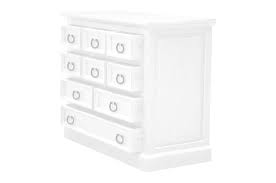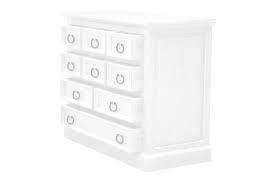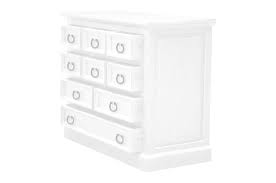The species of the deer also plays a. Deer don't hibernate in the winter, so when nighttime temperatures reach frigid lows, they have to find a warm spot to sleep in.

A mother and baby deer standing in snow Smokey mountains
Deer don’t hibernate in the winter, so when nighttime temperatures reach frigid lows, they have to find a warm spot to sleep in.

Where do deer sleep in the winter. During winter, deer seem to search for bedding little much. They can survive even in the cold weather of canada. Actually deer is an active animal even during winter.
The can sleep alone or in groups, the latter option is much more insecure than the former. Deer sleep mainly with their heads often moving occasionally to a variety of positions. Deer are quite flexible in their sleeping and activity patterns.
How do deer sleep in the snow? However, as the season progresses bucks will begin to drop their antlers. Deer also typically seek areas that are more sheltered in which to rest and eat, such as stands of coniferous trees that maintain their needles during the winter and allow snow to build up, both of which help provide some wind resistance and possibly cover.
They do this because the trees are perfectly suited for this purpose. Deer yard habitat is where deer go to avoid winter winds and deep snows. This helps them detect and avoid predators in the area, primarily because these animals have a very strong sense of smell.
Deer also have a habit of sleeping in the same spot repeatedly. When it snows, a deer may find shelter and sleep beneath coniferous trees such as pines. They can also choose a spot near an area where food is located.
In winter they have to rely on the layer of fat that was developed as a result of eating in autumn. They will move very little and remain for one to three months. When the temperature drops, deer often take shelter sleeping under coniferous trees like pine trees.
No, deer don’t hibernate to survive the winter season. They can shift to more diurnal activity and even nocturnal activity, as well. Deer also tend to move more during the daylight hours during colder temperatures, enabling them to conserve more energy by bedding down through the night and moving during the day when temperatures rise, even if it is just a few degrees.
Unlike some animals, deer do not hibernate. Their thick coat of hair helps them to survive cold winter by absorbing and trapping heat. Like any herbivore, the deer live on plants, nuts, fruits, and oak seeds.
During the night, deer tend to move much more frequently, and they like to move straight toward the wind. It would be wonderful if you could provide them with food and shelter during the cold season. Unlike humans and most domesticated animals, deer are always alert, even when they are resting or sleeping.
During cold nights, they look for shelter under or near a warm hotspot. Conifer swamps (chiefly cedar, fir, spruce and hemlock) make prime winter bedding areas. In spite of the fact that you may observe a deer enjoying the fallen fruits from trees.
They can be distinguished by size, because bucks are larger, weighing between 150 and 310 pounds, while does range between 90 and 210 pounds. Deer sleep a maximum of two to three hours. Deer usually pick place/places in deep forests, which can also contain broken woods lying on the ground.
Taking care of outdoor cats in winter. During winter, whitetails prefer to bed in places that are out of the wind and, if possible, that offer thermal cover overhead. Some deer may lay down and may appear dead lying on the ground until you try to get close to them.
Their eyes can be either open or closed but they can still doze. They can sleep standing up and can even sleep with their eyes open! Male deer (bucks) and female deer (does) often intermingle on the wintering grounds.
Outdoor cats could sleep more in winter, but that’s not a guarantee that they’ll survive it in good shape. During the winter months, deer tend to sleep in direct sunlight, as this helps them stay warm. Deer will change their sleeping and activity patterns based on factors such as weather (seasonal and daily) and human activity.
They can sleep with their legs and arms tucked in and under their chest and bellies. Some experts say deer bucks come out in summer the most. When winter conditions are bad in northern deer habitat in maine, michigan, minnesota and elsewhere, deer will “yard” up.
1) where do deer sleep? Deer don’t hibernate during the winter season, that is because they have a special type of skin muscle that can adjust the blood circulation in winter by producing heat and energy under furs and heavier coat of hairs. It is common for deer to sleep under conifer trees.
If you can’t plant any food plot then no need to get worried you can feed this majestic. Valley bottoms with conifer cover make good yards for deer. Deer, regularly known about gasping for the wells of water as they do.
On another research, it is found that a deer sleep only for 20 minutes also. Sometimes deer sleep with their noses tucked up beneath their hind legs or on their sides. When the deer gets underneath the branches of a conifer tree, they’re going to be shielded from wind and snow.
When the temperature drops, deer often take shelter sleeping under coniferous trees like pine trees. If you have enough knowledge about deer habitat in winter then it will be an easy task for you. Deer will also seek shelter during the night under the pine or conifer trees to make themselves warm and sleep.
In winter, deer stay under the sun to warm themselves and chew the cud. Nutritious food is scarce during the winter and the deer’s metabolism actually slows down significantly to help retain energy needed to keep the body warm. And in wintertime they move very less.
Research has shown that deer move very slowly in winter days and even nights. With conifer trees, the branches are going to be dense and closer to the ground. They move down to bottom valleys with less snow and more conifers where they could hide easily.
Where do deer sleep at night? It is always the head position that changes, and all this time, their eyes can either remain open or closed as they enjoy their short naps. Deer don’t sleep for too long.
Bucks may have antlers, while the females rarely do.

'Early Snow' Whitetail deer 16×20 Watercolor

Montage Deer Valley BLONDIE IN THE CITY Park city

Rise and Shine (27 Photos) Deer, Deer rut, Animals beautiful

Children skiing Photo by Ahsan Riaz Chaudhary Oslo

Apple Creek Whitetails Mule deer, Whitetail deer, Deer

joeygillphoto on Instagram Aww deer love! 😍 No cattiness

Artist Cynthie Fisher Whitetail Buck Deer Picture

Deer Taking Shelter in Winter Gustave Courbet, 1866

Deer in a forest in winter by Pieter Daniel Dik (19431984)

Freezing Cold null Cold, Freezing cold, Animals beautiful

Wolf sleeping in the dark photo by Grégoire Bertaud

Deer Swaddle Sack Fawn Cocoon Sleep Sack Buck Newborn

Artist Cynthie Fisher Unframed Whitetail Deer Art Print

Reindeer Deer pictures, Animals beautiful, Cute animal

an albino deer catching snow.. pretty sweet.. Albino deer

It's that time of year when the bears are finished eating

A beautiful deer was munching on my roses ) Photo by





